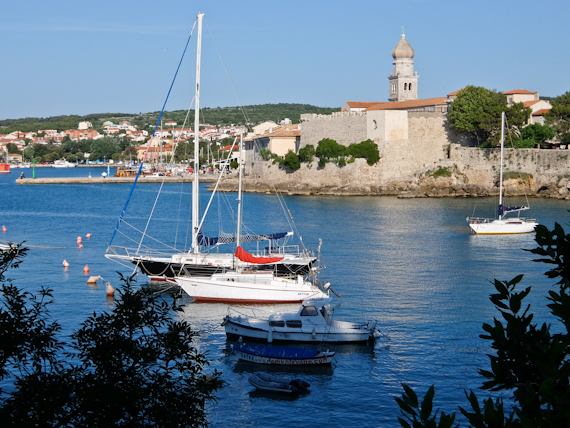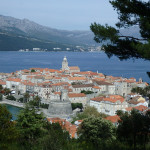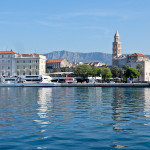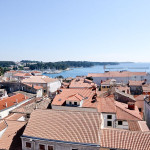In the North of Croatia, at the other end of the coast to Dubrovnik, is the Gulf of Kvarner, surrounded by forested mountains tumbling down to the sea.
The cobalt waters are deep enough to accommodate large ships and Rijeka is the country’s main port. In the 19th century, the rich of the Austro-Hungarian Empire spent their summers here, building opulent villas in the Hapsburg style. In the bay is an archipelago of attractive islands with the nearest connected to Rijeka by road bridge.
Rijeka
Most people pass through here on their way to the islands, but it’s Croatia’s third-largest city and well worth a couple of days. I’m staying in the 4* Grand Hotel Bonavia, in the heart of the city, recently revamped. My spacious room has a balcony with a view over the rooftops to the harbour and the sea beyond.
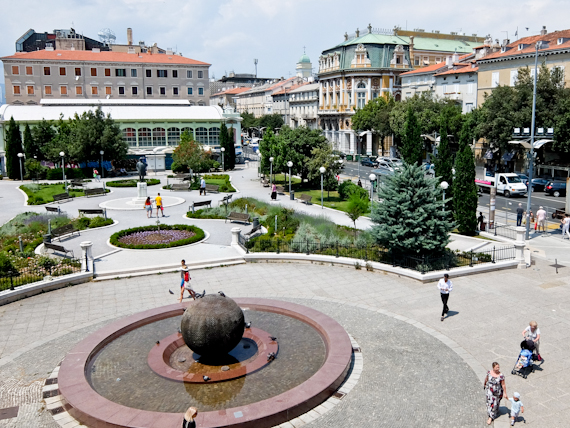
The city is an interesting mix of Hapsburg and Communist architecture with its only skyscraper built during Mussolini’s time with money from Al Capone’s accountant. These days the port buildings lie derelict and former President Tito’s yacht sits rotting at the dock. The pedestrian “Korso”, however, just behind the seafront, is lined with elegant buildings, shops and cafes and is surprisingly alive.
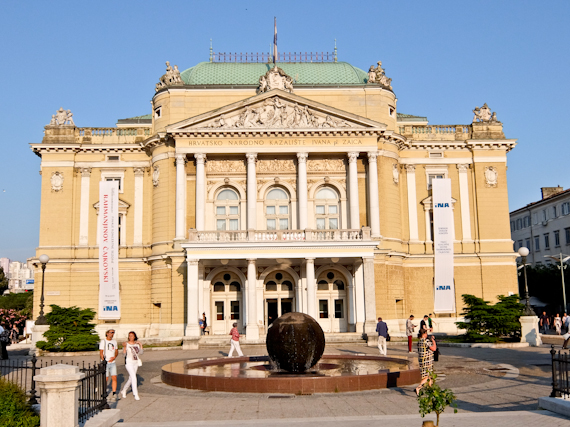
It’s where the locals take their evening promenade, perhaps on their way to a concert at the Croatian National Theatre Ivan Zajc which opened in 1885. I’m lucky to catch a performance of Rachmaninov and Tchaikovsky and marvel at the ceiling frescoes painted by Gustav Klimt. To watch the sunset, it’s worth walking up to Trsat Castle, a semi-ruined 13th century fortress, which has views down the Rječina river to the docks, Adriatic and the island of Krk.
Opatija
13km west of Rijeka, Opatija was a tiny fishing village until it was discovered by the Viennese rich and famous. Villa Angiolina, built in1844, was the first to host distinguished European aristocrats, including the Austrian Queen Maria Anna, and the building of the Vienna-Trieste railway brought in the rest. Russian Tsars, kings from Romania and Sweden, even Isadora Duncan, all flocked here and built their own beautiful belle époque villas.
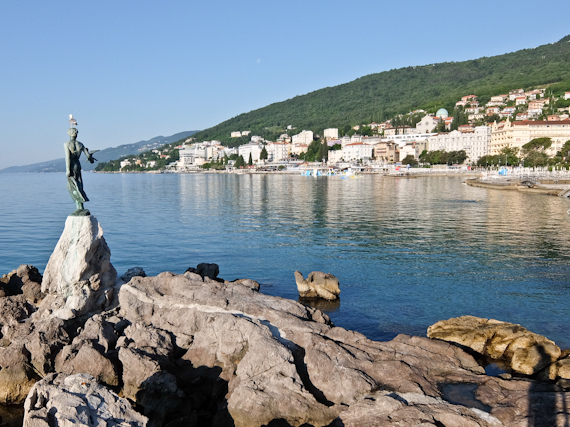
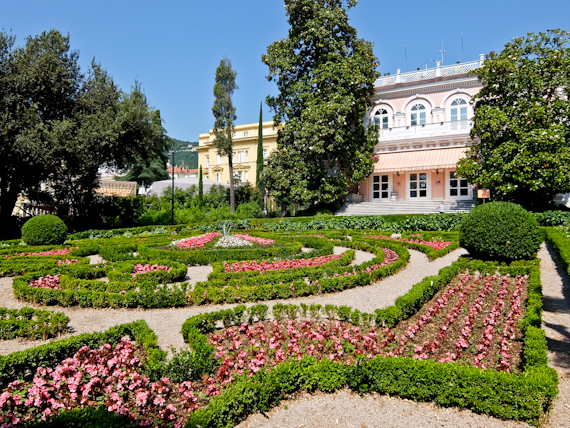
You can see many of these from the Lungo Mare which runs for 12km along the seafront from Volosko in the east to Lovran in the west. It lined with grand hotels and you pass through beautiful manicured gardens and, although there’s not much sand here, the sea is crowded with bathers. Sunsets are particularly good, so sip a cool drink on the terrace and wallow in the elegance of the resort.
Krk
Croatia’s largest island, with a population of around 20,000, attracts hordes of tourists in the summer, although it’s surprisingly easy to get away from them. Krk town was founded by the Romans and still has parts of their old walls and gates, and the Frankopan castle was built in the 12th century. Its streets are too narrow for cars, so the centre is a charming pedestrian labyrinth stuffed with craft boutiques and restaurants.
10km away, on the Eastern side of the island, perched on a cliff overlooking the sea, is the medieval village of Vrbnik. It claims to have the narrowest street in the world, just 43cm wide, but the real attraction here is the food and the local žlahtina white wine. Tastings are available at various places around town, but Nada is one of the best. They also have an excellent restaurant where you can sample not just their white but also their sparkling Prosek and Bradija red.
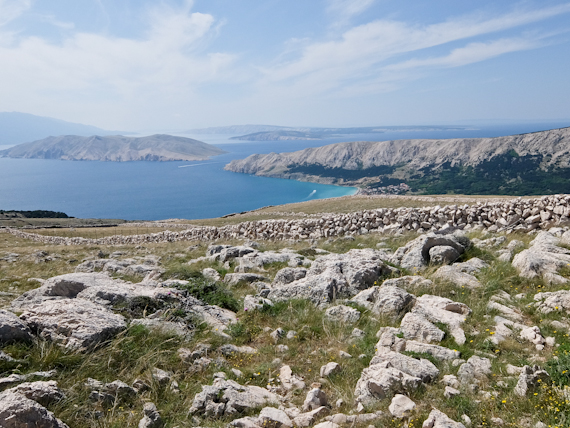
At the southern tip is Baska, an attractive resort set on a glorious bay. I take a hike along the “moon trail” path over stark limestone hills, dotted with stone pens still used for corralling and shearing sheep. I’m lucky enough to see a couple of rare Griffon Vultures, extinct in the rest of the country, and only found in these islands.
I can’t leave without visiting the 12th century St Lucy church in Jurandvor just nearby. Here, in 1851 a huge stone tablet was discovered in the paving, weighing 800kg and dating from around 1100. It’s inscribed in Glagolitic script, the oldest form of Slavic writing, widely used from the 9th to the 16th century and records Croatian King Zvonimir’s donation of a piece of land to a Benedictine abbey. It has the first written mention of the word Croatia so it’s particularly important.
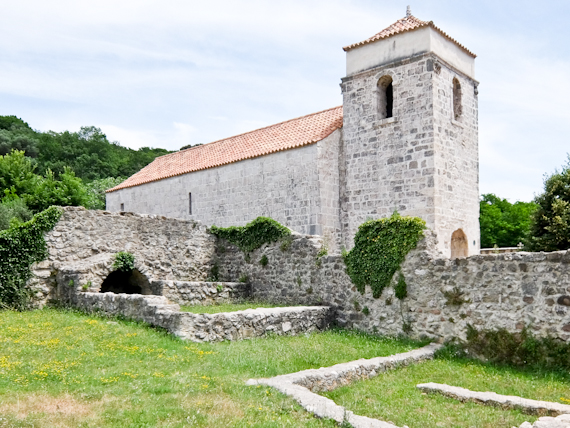
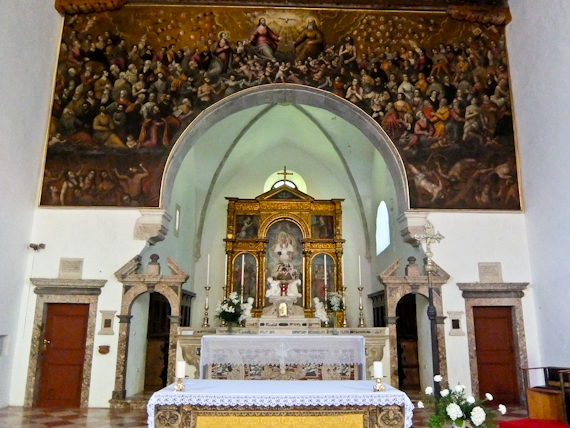
On my way back, near the town of Punat, I take a short 10-minute boat ride to the tiny islet of Košljun, only 300m across. It’s home to a 15th-century Franciscan monastery built on the site of a 12th-century Benedictine abbey, and a handful of monks still live here. In the monastery church, there’s a colourful Last Judgment, painted in 1653 and also a small museum with religious paintings and ethnographic collections. The monastery is surrounded by forest, perfect for meaningful contemplation.
I have lunch at Restaurant Olive Garden, situated as you can guess in the Ulika olive oil farm. Food is sourced locally and most people on Krk own sheep, make cheese and sell the meat. Others have pigs and chickens, and the fishermen still go out every day. There’s still a tradition of growing your own fruit and veg, and everything I get in restaurants doesn’t come from very far away. Add the excellent local wine and I’m a happy eater.
Tell Me More About Rjeka And The Gulf Of Kvarner
Prestige Holidays has a four night break in May 2020 from £899 per person based on two sharing in a standard room at the Grand Hotel Bonavia with BB including flights from Stansted to Rijeka and shared transfers (01425 480400)
Kvarner Tourism has information about the Gulf of Kvarner and the region.
Ryanair flies direct to Krk from Stansted.
The Stansted Express is the fastest way to the airport from central London.

